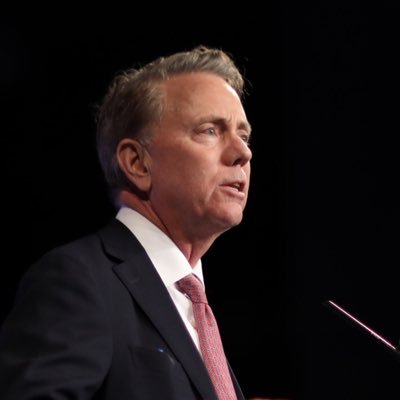
Governor Ned Lamont is urging community stakeholders throughout the State of Connecticut – including municipal officials, community-based organizations, nonprofit providers, and philanthropic partners – to establish local long-term recovery committees that will help meet urgent needs, accelerate recovery, and expedite coordination with the state’s emergency management structure in the ongoing response and recovery efforts from the COVID-19 pandemic.
The governor explained the local long-term recovery committees are needed to ensure the needs of Connecticut’s residents of every background are met, not just during the height of this crisis, but for the long term.
“Responding to a disaster is a shared responsibility that calls for the involvement of everyone – state government, local government, and a wide range of community partners,” Governor Lamont said. “By working together, we can continue to improve the way we support our residents and our communities as they meet urgent needs and bounce back from the COVID-19 crisis. A wide range of partners are ready to work with us on this, including the Connecticut Conference of Municipalities, the Council of Small Towns, and our regional Councils of government, as well as our nonprofits and partners in philanthropy. I am grateful to them all.”
Local long-term recovery committees should be comprised of nonprofit, government, and private-sector partners that have an in-depth knowledge of the communities they serve. Community stakeholders are urged to work through their regional planning emergency teams on the development of these committees. The Office of the Governor, the Connecticut Division of Emergency Management and Homeland Security (DEMHS), and the Connecticut Voluntary Organizations Active in Disaster (CT VOAD) are in the process of reaching out to stakeholders in support of the development of these local coordination structures. Some communities have already coordinated much of these efforts, and others are urged to strengthen their work so that the state and its communities can have one coordinated approach. Information on building these local long-term recovery committees can be found at ctrecovers.ct.gov.
Lt. Governor Susan Bysiewicz will take a leading role in this coordination effort and will be participating in organizational meetings the state is holding for these local communities.
Lt. Governor Bysiewicz said, “These local long-term recovery committees are critical as they work to ensure local and state resources are utilized effectively, so that every ounce of energy and every dollar spent in each community has the highest impact for our residents. Coordinating these efforts from the ground up at the local level is an important way to ensure inclusion of all community voices in the recovery process.”
Paul Mounds, Chief of Staff to the Office of the Governor, said, “Local coordination committees will be an important partner in the efforts to reopen Connecticut, as a source of information regarding community needs and as a channel for communication with the emergency management and Reopen Connecticut effort. We look forward to working closely with our communities through these important local teams.”
Department of Emergency Services and Public Protection Commissioner James C. Rovella said, “Our experience in emergency management, including recovering from Hurricanes Sandy and Maria, teaches us that efforts are most effective when state, local, tribal, federal, and private-sector partners work together to coordinate recovery efforts in our local communities. We have a chance to employ our State Disaster Recovery Plan and lessons learned to recover from this emergency, and to improve an infrastructure which will only ensure we’re even more prepared for challenges ahead.”
Michael Corey, chair of CT VOAD, said, “Voluntary organizations that understand disaster response are an important part of the local and statewide recovery effort. We are pleased to work in partnership with the governor and local, state, and federal colleagues to ensure that our residents and communities can plan a path to recovery from the COVID crisis. We know that every community in our state has unique strengths and challenges – that’s why this type of organization is so critical.”
Joe DeLong, executive director and CEO of the Connecticut Conference of Municipalities, said, “The Connecticut Conference of Municipalities looks forward to working with the governor, the emergency management team, and our community partners to strengthen this coordination where it is underway, and to build new structures where they are not already in in place.”
Elizabeth Gara, executive director of the Connecticut Council of Small Towns, said, “The Connecticut Council of Small Towns stands ready to support our towns in this effort, including assisting small towns in collaborating with neighboring communities on a regional basis to set the stage for long-term recovery and meet the needs of our residents and businesses.”
Sam Gold, chair of the Connecticut Association of Councils of Government, said, “The Councils of Government are committed to being strong partners for our local communities as they build recovery coordination plans. We stand ready to support this effort and make sure our residents have the support they need.”
Gian-Carl Casa, president and CEO of the Connecticut Community Nonprofit Alliance, “Nonprofits are a critical part of the fabric of every community – from those that deliver health and human services, to our arts and humanities organizations and more. The Alliance looks forward to working with the emergency management team to ensure that our members play an important role in local recovery coordination efforts.”
Karla Fortunato, CEO of the Connecticut Council on Philanthropy, said, “Connecticut’s philanthropic organizations are eager to support the work of our communities and our partners on the ground. We are ready to stand with them, and help build the most effective possible recovery efforts for our communities.”